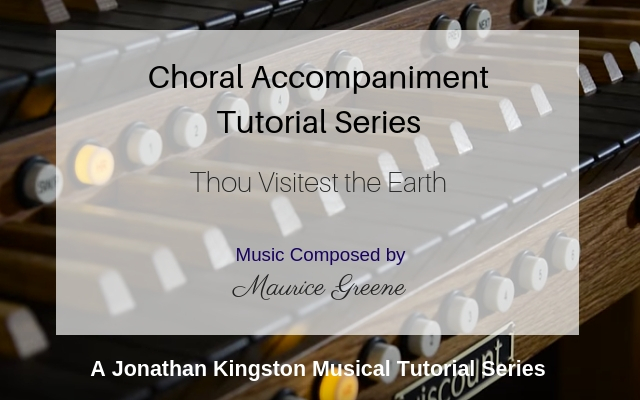Our fifth release in the Choral Accompaniment series is the delightful anthem “Thou visitest the earth” by Maurice Greene.
For our 2018 tutorial series we’re concentrating on the organ as a means of choral accompaniment. Church choral music was chosen to illustrate the accompaniment of various parts of the liturgy and to highlight some well-known anthems. The setting for these recordings, St Mary’s, Chalgrove, is a beautiful medieval church stunningly restored in 2015.
You can find out more about the choir, the organist, the church and the other five videos in our introduction to the Choral Organ Accompaniment Series.
Maurice Greene: Thou Visitest the Earth
“Thou visitest the earth” often used at harvest time, because of its text “Thou visitest the earth and blessest it: and crownest the year with thy goodness,” based on Psalm 65. It’s actually taken from a longer verse anthem “Thou O God art praised in Sion”, and it’s set for tenor solo followed by an SATB rendition.

Greene lived and worked mainly in London during the Georgian period, being roughly contemporary with Handel (Greene was born in 1696 and died in 1755). He became organist at Wren’s recently rebuilt St Paul’s Cathedral where he had originally been a choirboy, singing under Jeremiah Clarke. He subsequently held a number of prestigious posts, including organist at the Chapel Royal, professor at Cambridge, and Master of the King’s Musick.
Organ Accompaniment for the Choir
The organ accompaniment to “Thou visitest the earth” will typically be in a rather simple continuo style, mainly with quiet 8 foot flute or stopped diapason, or possibly 8 and 4 foot at times depending on the voicing of the organ in question. The accompaniment largely doubles the vocal parts, although there are moments when a little more embellishment may be in order.
As Jonathan Kingston suggests in his introduction, inventive phrasing and possibly stylistic ornamentation in keeping with the customs of the period are the order of the day here.
Watch the video of “Thou visitest the earth” by Maurice Greene below. This is played by Jonathan Kingston on a custom built Envoy 23-S, which is a very popular church organ.
I have had a passion for church organs since the tender age of 12. I own and run Viscount Organs with a close attention to the detail that musicians appreciate; and a clear understanding of the benefits of digital technology and keeping to the traditional and emotional elements of organ playing.



